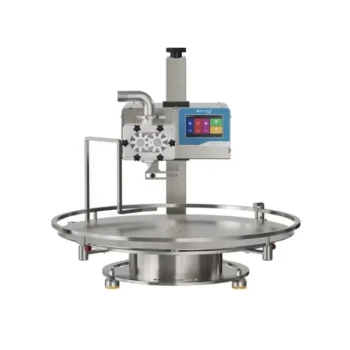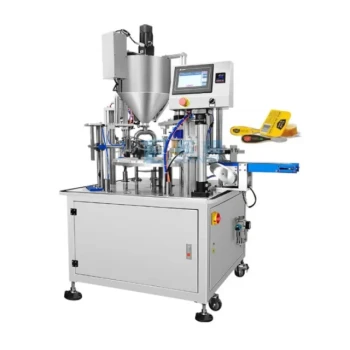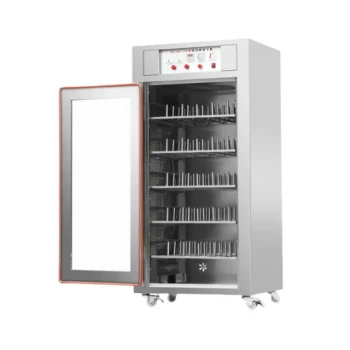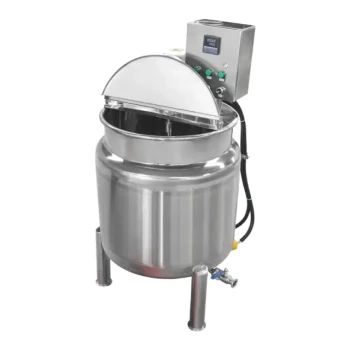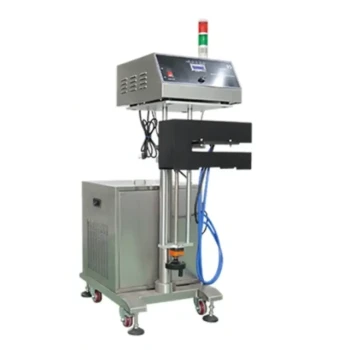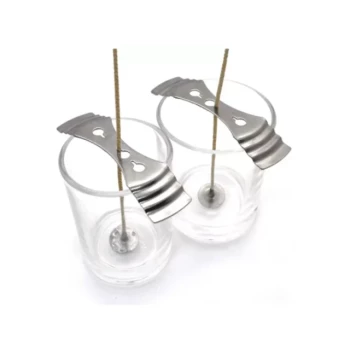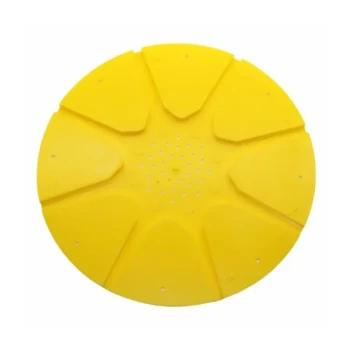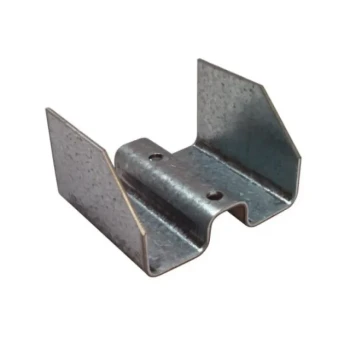The equipment used for filling is categorized by the technology it uses and the specific characteristics of the product being handled. Key types include volumetric fillers, piston fillers, net weight fillers, aseptic fillers, and weigh fillers, each engineered to handle products ranging from thin liquids and viscous creams to free-flowing or clumping powders.
The central principle in selecting filling equipment is that the product's physical properties—whether it's a liquid, powder, or solid—determine the appropriate technology. There is no single "best" filler; there is only the right filler for a specific product and production goal.
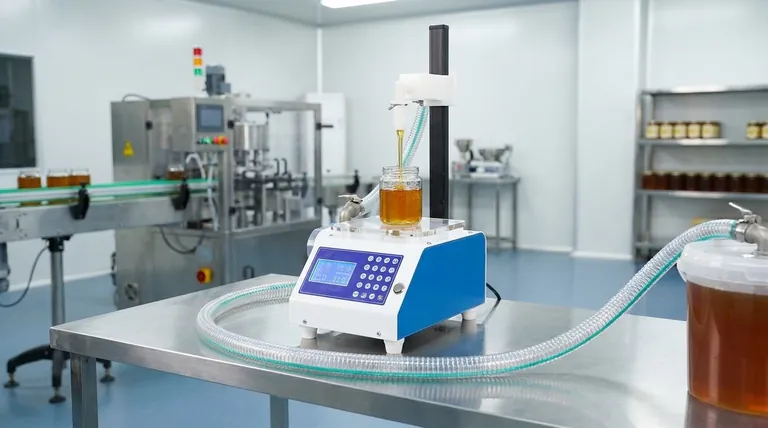
Matching Technology to Product State
The most fundamental factor in choosing a filling machine is the physical state of your product. Equipment is highly specialized to handle the unique challenges presented by liquids, powders, and solid items.
For Liquid and Viscous Products
Liquids range from water-thin to thick pastes, and each requires a different approach to ensure an accurate and clean fill.
Piston Fillers
Piston fillers are the workhorse for viscous products like sauces, creams, gels, and heavy pastes. They use a cylinder and piston mechanism to draw in and dispense a precise volume of product, providing the force needed to move thick materials.
Net Weight Fillers
These machines are ideal for high-value liquid products where fill accuracy is critical to profitability. Instead of filling by volume, each container is filled to a pre-set weight, eliminating variations caused by temperature changes or product density.
Aseptic Fillers
Used primarily in the pharmaceutical and food industries, aseptic fillers sterilize the packaging and the product separately and then combine them in a sterile environment. This process is essential for products like milk, juice, and medications that require a long shelf life without refrigeration.
For Powders and Granules
Powders present unique challenges, such as dusting, clumping, or inconsistent flow. Fillers are designed based on how easily the powder flows.
Auger Fillers (for Non-Free-Flowing Powders)
For powders that tend to clump, cake, or are difficult to handle, such as flour, cocoa, or protein powder, an auger filler is the standard. It uses a large screw (auger) to dispense the product with precise rotational control, ensuring a consistent fill volume.
Volumetric Fillers (for Free-Flowing Powders)
Products that flow easily and consistently, like granulated sugar, salt, or coffee grounds, can be filled using a volumetric cup filler. This method is fast and cost-effective, dropping a pre-set volume of product into each container.
For Solid and Piece Products
Filling by individual pieces, like snacks, hardware, or candy, requires a method that can count or weigh discrete items accurately.
Vibratory Weigh Fillers
Also known as multi-head weighers, these machines use a series of vibrating hoppers to feed product into weigh buckets. A computer calculates the combination of buckets that equals the target weight, providing extremely high accuracy for solid products like chips, nuts, and frozen foods.
Understanding the Trade-offs
Selecting a filling machine involves balancing several key operational factors. The right choice for one application may be entirely wrong for another.
Speed vs. Accuracy
High-speed systems, such as rotary fillers, are designed for maximum throughput in industries like bottling. However, they may offer slightly less pinpoint accuracy than slower, more deliberate systems like net weight fillers, where every gram counts.
Versatility vs. Specialization
Some machines are built for flexibility, allowing for quick changeovers between different products and container sizes. Specialized machines, on the other hand, are optimized for one task, delivering unmatched efficiency and speed for a single product line.
Cost and Complexity
The initial investment is only part of the equation. A complex machine like an aseptic filler carries a high capital cost and requires rigorous maintenance and skilled operators. A simple volumetric filler is less expensive to purchase and maintain but offers less precision and control.
How to Select the Right Filling Equipment
Your product and business goals are the ultimate guide. Focus on the core requirement of your operation to narrow down the best technology for the job.
- If your primary focus is high-value liquids where accuracy is paramount: A net weight filler minimizes product giveaway and maximizes profitability.
- If your primary focus is viscous products like creams or sauces: A piston filler provides the positive displacement force needed to move thick materials accurately.
- If your primary focus is free-flowing powders or granules: A volumetric cup filler is a cost-effective and high-speed solution for consistent products.
- If your primary focus is non-free-flowing or dusty powders: An auger filler offers the precise control needed to handle difficult-to-manage products.
- If your primary focus is solid items like snacks or hardware: A vibratory weigh filler ensures an accurate package weight by counting or combining pieces.
Ultimately, a thorough analysis of your product's unique properties will guide you to the most efficient and reliable filling solution.
Summary Table:
| Product Type | Recommended Equipment | Key Feature |
|---|---|---|
| Viscous Liquids (creams, sauces) | Piston Filler | Positive displacement for thick products |
| High-Value Liquids | Net Weight Filler | Fills by weight to maximize profitability |
| Non-Free-Flowing Powders (flour, cocoa) | Auger Filler | Precisely handles clumping or dusty materials |
| Free-Flowing Powders (sugar, salt) | Volumetric Cup Filler | Fast, cost-effective volume filling |
| Solid Items (snacks, nuts) | Vibratory Weigh Filler | High-speed, multi-head weighing accuracy |
Ready to optimize your packaging line with the right filling equipment?
At HONESTBEE, we supply commercial apiaries and beekeeping equipment distributors with the durable, high-performance filling solutions they need. Whether you're packaging honey, wax, or other hive products, we can help you select the ideal machine to boost your accuracy, speed, and profitability.
Contact our experts today for a personalized consultation and discover how the right equipment can transform your operation.
Visual Guide

Related Products
- Economy Small Honey Filling Machine Honey Bottle Filler Packaging Machine
- Small Honey Filling Machine Sachet Packing Equipment Single Nozzle
- Commercial Rotary Honey Filling Machine for Production
- Automated Rotary Bottle Unscrambler for Honey Production Line
- Precision Automated Packaging Turntable Honey Spoon Filling Sealing Packing Machine
People Also Ask
- What technologies are incorporated into honey filling machines? Piston, Pump, or Gravity for Your Production
- What is the best use case for pump filling machines? Efficiently Bottle Medium-Viscosity Liquids
- How does a VFFS liquid packaging machine handle honey packaging? Master Viscous Liquid Filling
- What equipment is used for packaging honey? A Guide to Filling, Capping & Labeling Systems
- What features should a machine have to handle honey's viscosity effectively? Ensure Accurate, Clean Filling


